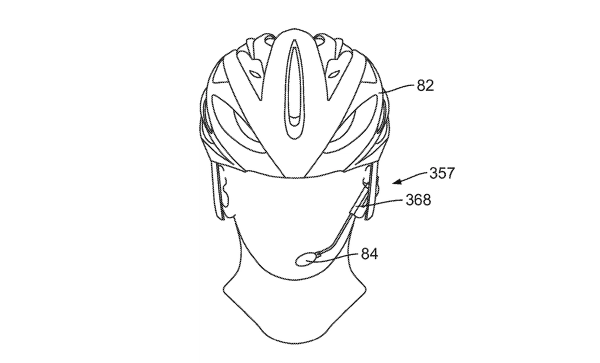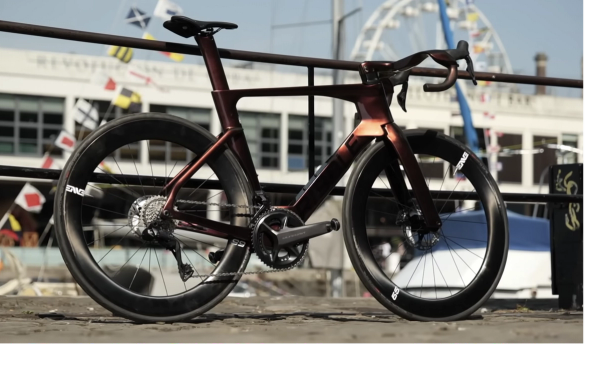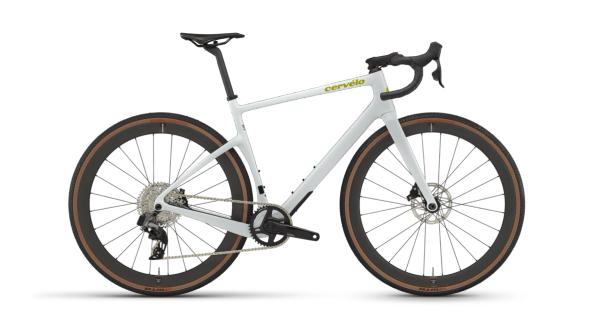Automatic bicycle gears: the LandRider Auto-Shift
Automatic shifting on a bike sounds like an innovation of the future - but it turns out it's already arrived… a while ago
Alex Hunt
Junior Tech Writer
During a commuter cheap bike challenge that featured on the GCN YouTube channel a while back, our presenter Hank turned up with a rather unusual bike. This bike from the early 2000s had an automatic rear derailleur. This isn't something we had come across here at GCN before, so thought we would take a proper dive in to just what it is.
The LandRider Auto-Shift
For this futuristic bit of technology, we need to look back in time a bit. Specifically back to 2002 when an American company named LandRider released the Auto-Shift derailleur. It was marketed at the fitness and leisure side of the sport, and the price for this magical bit of technology at the time was just shy of $400. No small investment.

© GCN
The LandRider Auto-Shift required a large guard to protect the spinning counterweights.
What is especially intriguing about the Auto-Shift is how there is no battery, no cables and no electronics at all. The Auto-Shift is a purely mechanical system that uses a series of counterweights and belts to shift, based on the input to the cassette.
The shifting that this system can offer isn’t going to be comparable to that of the latest generation Shimano Di2 or SRAM eTap AXS offerings, but for a system that is purely mechanical and 21-years old, it works remarkably well.
Although the LandRider Auto-Shift was never marketed at the competition or endurance audience, that didn’t stop it from being used in an around the world cycling attempt. This is perhaps the truest test of reliability for the system with one of the riders claiming ‘four years and 23,000 miles, LandRider all the way’
How does the Auto-Shift work?
The system relies on a plastic disc fitted behind the cassette, and this disc has a belt fitted around it that is connected to a small gear on the rear of the derailleur. The derailleur itself has two small counterweights that are fixed to the gear the belt is driving.
As you ride faster and faster, these counterweights get pulled apart by the centrifugal force exerted on them. The parallelogram of the derailleur is connected to the internal section of the counterweights, as the weights separate and get pulled apart. This has the effect of pulling the cage over and shifting down into a smaller cog, allowing the rider to pedal at a fixed cadence.
As you slow down the force on the weights decreases and therefore the spring in the derailleur can overcome the centrifugal force of the weights, allowing a downshift to happen.
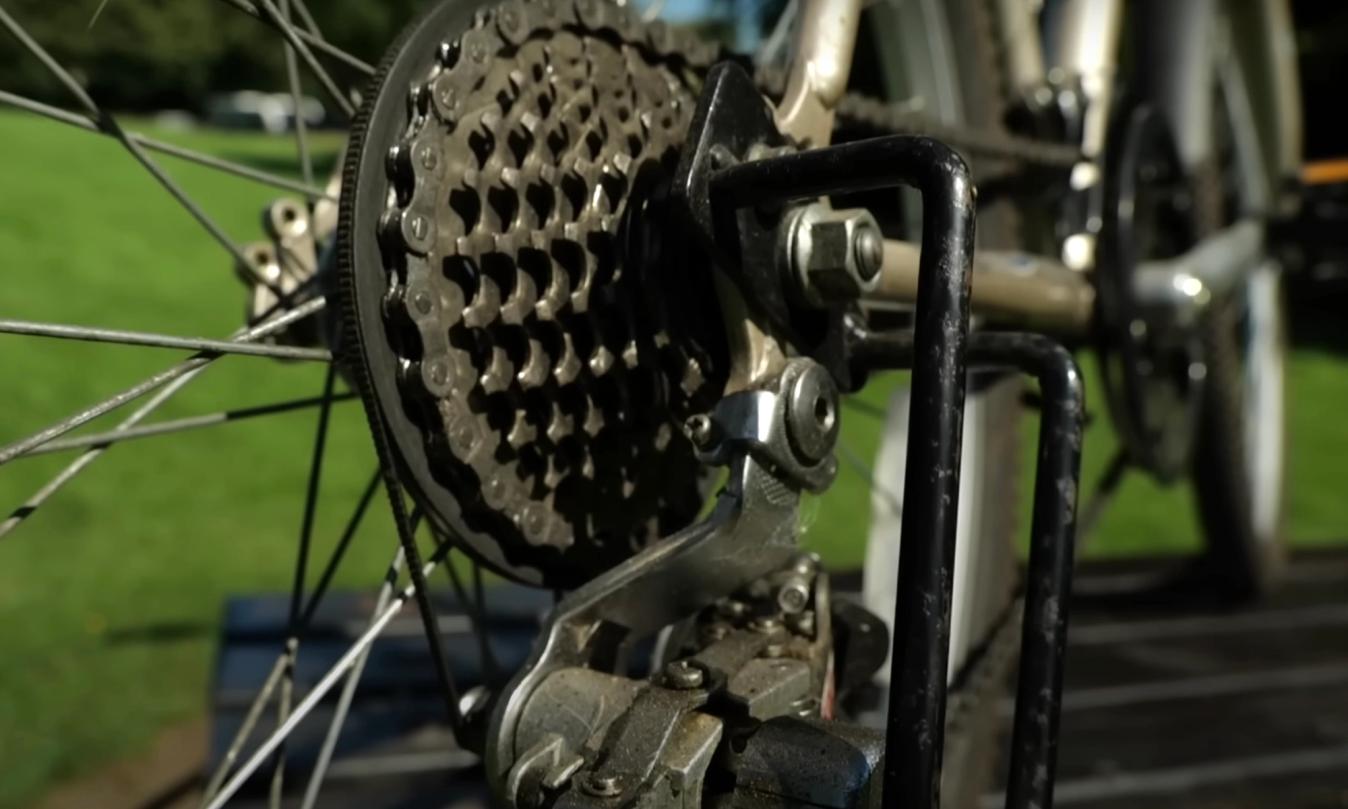
© GCN
A closer look at the belt drive system that links the cassette to the derailleur.
Although it's a feature that is unlikely to have been of any use for the intended customer base, the spring tension on the counterweights is adjustable with a 6mm hex key. This would allow you to tweak the feel of the mech so that the speed you would be travelling at for each gear change could be adjusted, allowing for a different working cadence to be selected.
The system does come in on the heavy side as you might expect. The weight of the belts and gears, as well as the counterweights themselves, add up and the Auto-Shift tips the scales at 600 grams, almost double that of the latest Shimano 105 Di2 set-up. Once you consider that a shifter is not required with the Auto-Shift, the weight difference between the two systems isn't that dissimilar.
Issues with the system
Although ahead of its time, there are some issues with the Auto-Shift system that prevent it from quite hitting the mark with the needs of riders.
Firstly, the system is not indexed at all. That means that there are certain speeds where the gears will click and jump around until you either speed up or slow down. Having to trim the gears with your speed is far from ideal and would become very wearing on a long ride.
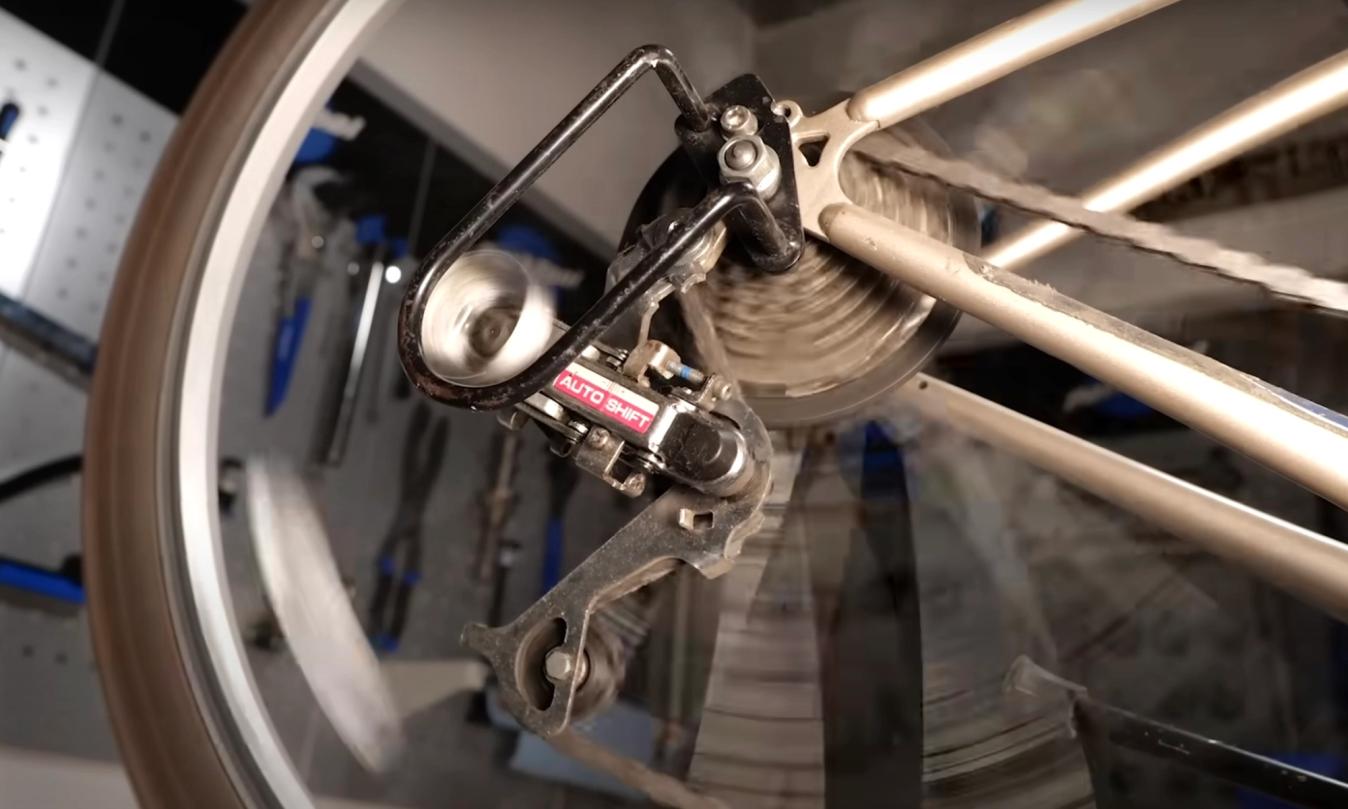
© GCN
As the system is infinitely variable, smooth gear changes were dependant on the speed you were riding at.
If the drive belt between the gear behind the cassette and the derailleur snapped, it would leave you with no gears other than the easiest one, making for a long, slow cycle back home. Unfortunately broken or damaged belts were not an anomaly.
The biggest draw back with the system was big changes in speed that happen very quickly whilst not pedalling. A classic example of this would be rolling over the top of a hill and cruising down the other side.
As you get to the bottom and naturally want to start pedalling again, you would have to change across the whole cassette. These massive changes in gear very quickly were not something the system could handle very well and would be best done under low power.
What we think
The LandRider Auto-Shift was an amazing bit of technology developed in the early 2000’s that really pushed what was on offer to riders at this time. A purely mechanical solution to automated shifting, it is rather elegant in how it works with no electronic intervention, however there are some issues that cannot be overlooked.
It is really fascinating to get to see this old-school technology in action, if you have ever used a LandRider Auto-Shift or anything similar please get in touch and let us know. We love pioneering technology here at GCN and thank inventions like this for what we have now.

.jpg?rect=957,780,3097,3060&w=600&auto=format)







